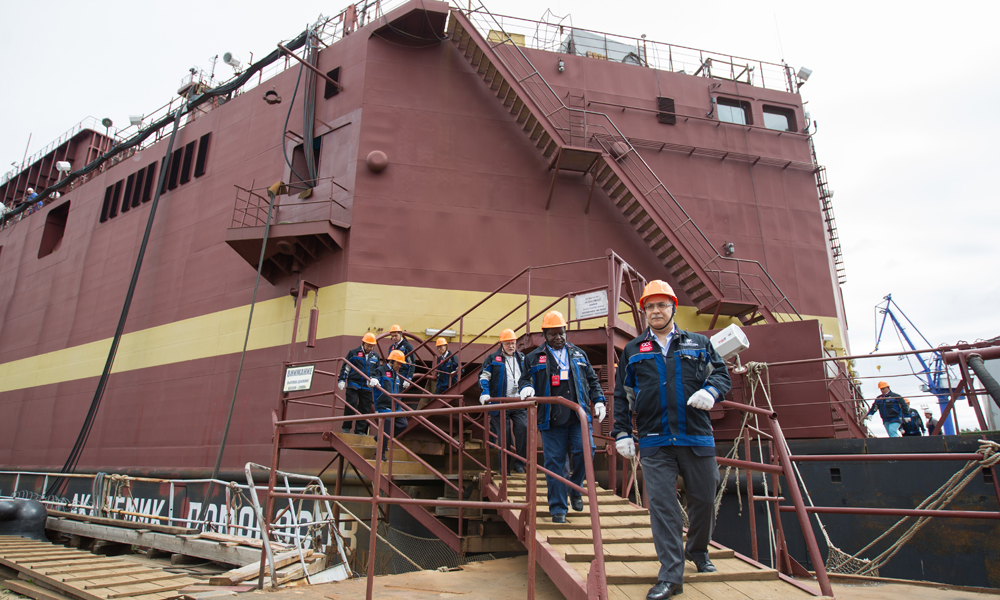
FNPP on the Homestretch
back to contentsThe Baltic Shipyard in Saint Petersburg is about to complete the construction of a power unit for Akademik Lomonosov, the world’s first floating nuclear power plant (FNPP). It is 96% complete, said Alexei Vladimirov, FNPP Project Manager at the Baltic Shipyard. The FNPP is designed to be operated in Russia’s Far North and Far East, particularly as a source of power for the Chukotka Peninsula.
“Construction of the floating power unit is in its final phase. Technically, it is about 96% complete. All the systems and machinery have been installed, and we plan to finish the construction by 30 November 2017,” Vladimirov said. RosEnergoAtom, Rosatom’s subsidiary and FNPP project owner, plans to connect the unit to Chukotka’s grid in December 2019.
The FNPP is a totally autonomous power unit that can be transported to any part of the world. The capacity of the plant will be sufficient to sustain life in a city of 100,000 people. Having two KLT-40S reactors, the floating power unit is based on the design of a nuclear icebreaker reactor, the reliability of which was proven in long-time operation in the Arctic region. Unlike an icebreaker, the FNPP is not self-propelled. The facility is constructed in the shipyard to be towed by sea or river vessels to its place of operation. After arrival, it is connected to local infrastructure to supply electricity and heat to communities and production sites. According to the designers, the FNPP has been developed with high safety margins enabling it to withstand extreme weather conditions and is fully compliant with the IAEA safety standards.
The FNPP has a 40-year service life divided into three 12-year operating cycles. After each cycle, the floating power unit will be transported to a special dock for intermediate maintenance and nuclear fuel reloading.
Rosatom expects to promote the project on the global market. FNPP designers believe that floating nuclear plants will be adaptable to any climate and fully customizable, including optional installation of desalination equipment, which is crucial for countries in dire need of fresh water.
At present, Rosatom Group companies are heavily engaged in the development of an improved floating power unit. The project leverages expertise gained in the construction of Akademik Lomonosov yet includes several changes. The improved unit will have two RITM- 200M reactors, which are now the world’s latest and most compact reactors, with a total capacity of 100 MWe. The new solution provides for a 30% increase in capacity, a 50% reduction of the containment area and a 30% decrease in the reactor weight. In general, the above changes reduce vessel dimensions. Specifically, they cut its length by 30 meters and width by 5 meters, with water displacement reduced by 9.000 tons and capacity increased 3.7-fold. The concept design and workflow philosophy of the new floating unit have been already developed. Rosatom’s subsidiary AEM is about to start preliminary negotiations with prospective customers.




